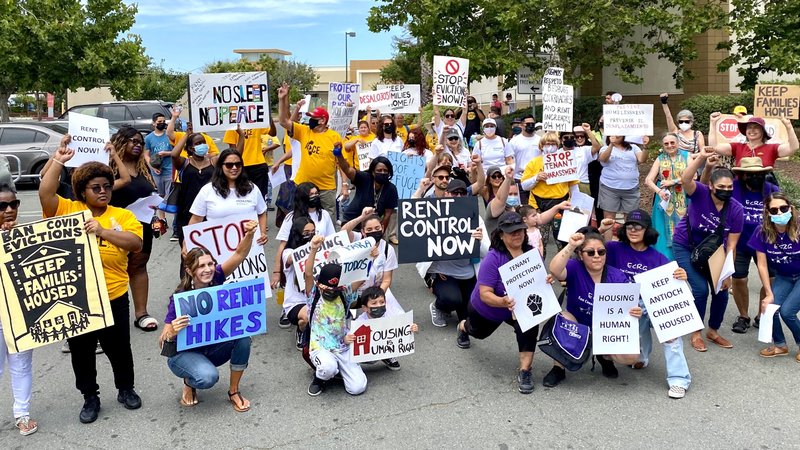Want to End Homelessness? Keep People Housed in the First Place
By Mike Dennis, Senior Director of Housing Justice
Return to NewsletterFor the second year in a row, homelessness in Los Angeles is down. That’s worth celebrating—not because the crisis is solved, but because we finally have evidence that the right investments are working.
You wouldn’t know it from the headlines. Contract disputes and political crossfire make for good click-bait, but they miss a basic truth: the most effective—and cost-effective—way to address homelessness is to stop people from losing their housing in the first place. In philanthropy, we often call these upstream investments—programs that prevent homelessness before it starts. Funders may also know them as prevention strategies: rent relief, right-to-counsel programs, tenant protections, and income supports. These interventions reduce human suffering, stabilize families, and avoid the expensive spiral that begins with an eviction notice and too often ends on the street.
Los Angeles has been building that upstream architecture. Stay Housed L.A. (SHLA) connects renters to legal help, tenant navigation and “know your rights” education. United to House LA (ULA) funds rent relief, income supports, and affordable housing. Outreach, case management, and permanent placements are scaling. Together, these efforts help explain why unsheltered homelessness has fallen—because fewer people become homeless. It’s hard to measure prevention precisely—people who stay housed don’t show up in a count—but two years of declines in a region this large should focus our attention.
Upstream vs. Downstream: Prevention or Punishment
Still, there’s a temptation to declare victory based on the most visible downstream actions—encampment removals or short-term placements—and then question the value of programs that are less visible but more fundamental. That’s a mistake. Downstream measures manage symptoms; upstream investments address causes.
And this contrast isn’t just local—it’s national. Just last month, President Trump issued an Executive Order directing federal agencies to prioritize “crime and disorder” over housing-first approaches, with language suggesting punitive responses—including detention facilities for unhoused people during the 2028 Olympics. This EO is a sharp warning: when prevention and upstream strategies are sidelined, punishment fills the vacuum. Moving people out of sight is not a solution. Keeping people in their homes is.
The True Cost of Failing Upstream
We already know what happens when prevention fails. The costs show up somewhere else: emergency rooms, shelters, policing, sanitation, lost wages, and school disruptions. Cities wind up paying more for worse outcomes. Eviction defense and renter protections aren’t line items to trim; they are cost-avoidance strategies that protect both public dollars and public dignity.
That’s why current contract disputes should not distract us from “housing first” principles. Oversight is important. Transparency matters. But the real test for policymakers isn’t whether they can win a press cycle—it’s whether they will protect and expand the upstream solutions that are actually driving homelessness down.
Beyond Housing: Building Economic Infrastructure for Prevention
At Liberty Hill, we’ve also been exploring structural innovations like public banking. Public banks, unlike Wall Street institutions, reinvest local dollars directly into community needs, such as affordable housing, green infrastructure, and small businesses. At our recent public banking forum, we highlighted how shifting even a fraction of city funds into a public bank could multiply resources for affordable housing, cut financing costs, and expand credit access for communities banks have long ignored.
This is upstream thinking at its core: prevention isn’t just about one program—it’s about building systems that make housing stability possible, from tenant protections to financial infrastructure that works for people, not profit.
What Los Angeles Should Do Next
If we want to sustain progress, Los Angeles should:
- Lock in prevention as core infrastructure. Right-to-counsel, rent relief, income supports, and community-based outreach should be consistent, not one-year pilots. Prevention isn’t a grant—it’s the foundation.
- Strengthen renter protections and enforce them. Passing laws is only step one; enforcement ensures tenants aren’t pushed into court in the first place.
- Pair upstream solutions with permanent housing. Prevention buys time; deeply affordable and supportive housing ends homelessness. ULA’s housing pipeline must move with urgency.
- Measure what matters. Track evictions prevented, households stabilized, and costs avoided—not just visible signs of crisis.
- Invest in systemic fixes. Tools like public banking can multiply local dollars for housing and protect communities from financial extraction.
The Bigger Picture
As Los Angeles looks ahead to 2028, the temptation to chase optics will only grow. But moving people out of sight is not a strategy. Upstream prevention is.
Nationally, punitive measures are on the rise. Locally, we’re proving another way forward: upstream investments, community-led solutions, and structural innovations like public banking. The numbers are clear—and so is the choice.
If we want to end homelessness, we must stop it where it starts.
